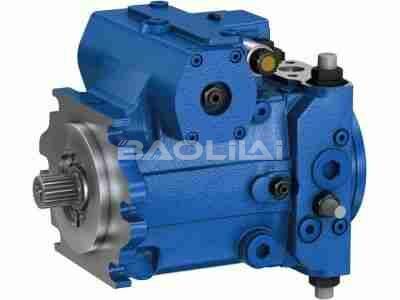The various factors that affect the solvent efficiency of plunger pumps revealed
Piston pumps are commonly used in a variety of industrial applications, and their solvent efficiency can be affected by a variety of factors. Solvent efficiency refers to the ability of a pump to move solvent or liquid from one location to another effectively and efficiently. These factors can include:
1.Pump design:
Piston pumps are available in various designs such as single acting and double acting. Design affects the efficiency of solvent transfer. Double-acting pumps provide more stable solvent flow.
2. Plunger material:
Plunger material affects solvent efficiency. Plungers are typically made from materials such as stainless steel, ceramic, or tungsten carbide. Material selection should consider compatibility with the solvent being pumped.
3. Sealing material:
Sealing is essential to prevent leaks. Sealing materials (such as PTFE, Viton, or elastomers) should be selected to be compatible with solvents to ensure an effective seal.
4. Pressure and flow:
Operating pressure and flow rate can significantly affect solvent efficiency. Higher pressures and flow rates may require more robust pump designs and materials to maintain efficiency.
5. Solvent compatibility:
The type of solvent being pumped is critical. Some solvents may be corrosive, abrasive, or viscous, and pump components must be compatible with the solvent to maintain efficiency.
H1-P-250-L-A-A-A5-C2-B-D8-C-G2-NN-L-35-L-35-R-P-24-PN-NNN-NNN H1P250LAAA5C2BD8CG2NNL35L35RP24PNNNNNNN
H1-P-250-L-A-A-A5-C2-B-D8-C-F8-NN-L-38-L-38-W-P-24-PN-NNN-NNN H1P250LAAA5C2BD8CF8NNL38L38WP24PNNNNNNN
H1-P-250-L-A-A-A5-C2-B-D8-C-F8-H6-L-38-L-38-R-P-20-PN-NNN-NNN H1P250LAAA5C2BD8CF8H6L38L38RP20PNNNNNNN
H1-P-250-L-A-A-A5-C2-B-D8-C-F8-H4-L-38-L-38-W-P-24-PN-NNN-NNN H1P250LAAA5C2BD8CF8H4L38L38WP24PNNNNNNN
H1-P-250-L-A-A-A5-C2-B-D8-C-F8-H3-L-38-L-38-W-P-24-PN-NNN-NNN H1P250LAAA5C2BD8CF8H3L38L38WP24PNNNNNNN
H1-P-250-L-A-A-A5-C2-B-D6-C-F8-H6-L-42-L-42-R-L-24-PN-NNN-NNN H1P250LAAA5C2BD6CF8H6L42L42RL24PNNNNNNN
H1-P-250-L-A-A-A5-C1-N-D8-E-G3-H6-L-41-L-41-W-P-24-P4-NNN-NNN H1P250LAAA5C1ND8EG3H6L41L41WP24P4NNNNNN
H1-P-250-L-A-A-A5-C1-N-D8-E-G3-H6-K-40-K-40-R-P-24-P4-NNN-NNN H1P250LAAA5C1ND8EG3H6K40K40RP24P4NNNNNN
H1-P-250-L-A-A-A5-C1-N-D8-C-G2-NN-L-33-L-33-R-P-24-PN-NNN-NNN H1P250LAAA5C1ND8CG2NNL33L33RP24PNNNNNNN
H1-P-250-L-A-A-A5-C1-N-D8-C-G2-E2-L-33-L-33-R-P-24-PN-NNN-NNN H1P250LAAA5C1ND8CG2E2L33L33RP24PNNNNNNN
H1-P-250-L-A-A-A5-C1-N-D6-E-G2-H2-L-42-L-42-W-L-24-P4-NNN-NNN H1P250LAAA5C1ND6EG2H2L42L42WL24P4NNNNNN
H1-P-250-L-A-A-A5-C1-N-D6-C-G3-NN-L-42-L-42-W-L-24-PN-NNN-NNN H1P250LAAA5C1ND6CG3NNL42L42WL24PNNNNNNN
H1-P-250-L-A-A-A5-C1-B-D8-C-G3-NN-L-35-L-35-R-P-24-PN-NNN-NNN H1P250LAAA5C1BD8CG3NNL35L35RP24PNNNNNNN
H1-P-250-L-A-A-A5-C1-B-D8-C-G2-H3-L-35-L-35-N-E-24-PN-NNN-NNN H1P250LAAA5C1BD8CG2H3L35L35NE24PNNNNNNN
H1-P-250-L-A-A-A5-C1-B-D8-C-F8-NN-L-38-L-38-W-P-24-PN-NNN-NNN H1P250LAAA5C1BD8CF8NNL38L38WP24PNNNNNNN
H1-P-250-L-A-A-A5-C1-B-D8-C-F8-E2-L-35-L-35-N-E-24-PN-NNN-NNN H1P250LAAA5C1BD8CF8E2L35L35NE24PNNNNNNN
H1-P-250-L-A-A-A4-C3-N-D6-C-G2-H1-L-45-L-45-W-L-24-PN-NNN-NNN H1P250LAAA4C3ND6CG2H1L45L45WL24PNNNNNNN
H1-P-250-L-A-A-A4-C2-N-D6-C-G2-H3-L-35-L-35-W-L-26-PN-NNN-NNN H1P250LAAA4C2ND6CG2H3L35L35WL26PNNNNNNN
H1-P-250-L-A-A-A4-C1-N-D8-E-G3-NN-K-35-K-35-W-P-24-P4-NNN-NNN H1P250LAAA4C1ND8EG3NNK35K35WP24P4NNNNNN
H1-P-250-L-A-A-A4-C1-N-D8-C-G3-NN-L-35-L-35-W-P-24-PN-NNN-NNN H1P250LAAA4C1ND8CG3NNL35L35WP24PNNNNNNN
6.Temperature:
Solvent temperature affects the viscosity and density of the liquid, which in turn affects the efficiency of the pump. Some pumps may have heating or cooling systems to control temperature.
7. Pump maintenance:
Regular maintenance of plunger pumps, including cleaning and replacement of worn parts, is critical to maintaining solvent efficiency. Neglecting maintenance can result in reduced efficiency and pump failure.
8. Inlet and outlet pipes:
The design and size of the inlet and outlet piping affects the efficiency of solvent transfer. Properly sized and configured pipes can minimize friction losses.
9.Pump speed:
The speed at which the pump operates affects efficiency. Some plunger pumps have variable speed controls to accommodate different solvent requirements.
10. System pressure:
System pressure, including back pressure from downstream equipment, affects pump efficiency. The plunger pump must be designed to handle the expected system pressures.
11. Pump size:
Correctly sizing the pump for a specific application is critical. Oversizing or undersizing a pump can result in inefficiency and excessive wear.
12. Filter:
Solvent quality is critical. The presence of contaminants or solids in the solvent can affect the efficiency of the pump. Using a proper filtration system helps maintain efficiency.
13. Pump material selection:
Materials used in pump construction, including pump heads and valves, must be compatible with solvents to prevent corrosion or deterioration.

14. Stroke length:
The length of the plunger stroke affects the efficiency of solvent transfer. A longer stroke can deliver more fluid per cycle, but this needs to be balanced with the flow and pressure requirements of the application.
15. Pump control and automation:
Implementing control and automation systems can optimize plunger pump operation, helping to maintain consistent flow and pressure levels, thereby increasing solvent efficiency.
16.Diaphragm pump:
In some cases, diaphragm pumps may be more effective with certain solvents, particularly those that are shear-sensitive. Diaphragm pumps provide gentle, pulsation-free pumping.
17.NPSH (net positive suction head):
Ensuring that the pump's NPSH requirements are met is critical to avoiding cavitation, which can lead to reduced efficiency and pump damage.
18. Viscosity:
The viscosity of the solvent can have a significant impact on the efficiency of a plunger pump. Highly viscous liquids may require specially designed pumps to effectively handle these conditions.
19. Pulsation suppression:
Pulsations in solvent flow can affect efficiency and may require the use of pulsation dampers or accumulators to smooth the flow.
20.Multiple pumps:
Where high flow rates are required, using multiple plunger pumps in parallel can increase efficiency and redundancy. This allows for consistent flow and reduced stress on individual pumps.
H1-P-250-L-A-A-A4-C1-B-D8-E-F8-H2-L-38-L-38-R-P-30-P4-NNN-NNN H1P250LAAA4C1BD8EF8H2L38L38RP30P4NNNNNN
H1-P-250-L-A-A-A4-C1-B-D8-C-G3-H3-L-35-L-20-W-P-24-PN-NNN-NNN H1P250LAAA4C1BD8CG3H3L35L20WP24PNNNNNNN
H1-P-250-L-A-A-A3-C3-N-D8-C-F8-NN-L-28-L-28-W-P-30-PN-NNN-NNN H1P250LAAA3C3ND8CF8NNL28L28WP30PNNNNNNN
H1-P-250-L-A-A-A3-C3-B-D6-C-G3-NN-L-23-L-23-W-L-24-PN-NNN-NNN H1P250LAAA3C3BD6CG3NNL23L23WL24PNNNNNNN
H1-P-250-L-A-A-A3-C2-N-D8-C-G2-H6-L-35-L-35-W-P-24-PN-NNN-NNN H1P250LAAA3C2ND8CG2H6L35L35WP24PNNNNNNN
H1-P-250-L-A-A-A3-C2-N-D8-C-G2-H4-L-35-L-35-W-P-24-PN-NNN-NNN H1P250LAAA3C2ND8CG2H4L35L35WP24PNNNNNNN
H1-P-250-L-A-A-A3-C2-N-D8-C-F8-E1-L-35-L-35-W-P-24-PN-NNN-NNN H1P250LAAA3C2ND8CF8E1L35L35WP24PNNNNNNN
H1-P-250-L-A-A-A3-C2-N-D6-C-F8-H4-K-35-K-35-W-L-28-PN-NNN-NNN H1P250LAAA3C2ND6CF8H4K35K35WL28PNNNNNNN
H1-P-250-L-A-A-A3-C2-N-D6-C-F8-H3-K-35-K-35-W-L-28-PN-NNN-NNN H1P250LAAA3C2ND6CF8H3K35K35WL28PNNNNNNN
H1-P-250-L-A-A-A3-C1-N-D8-E-G3-H3-K-40-K-40-W-P-24-P4-NNN-NNN H1P250LAAA3C1ND8EG3H3K40K40WP24P4NNNNNN
H1-P-250-L-A-A-A3-C1-N-D8-C-G3-NN-L-42-L-42-R-P-24-PN-NNN-NNN H1P250LAAA3C1ND8CG3NNL42L42RP24PNNNNNNN
H1-P-250-L-A-A-A3-C1-N-D8-C-G3-H3-L-42-L-42-R-P-24-PN-NNN-NNN H1P250LAAA3C1ND8CG3H3L42L42RP24PNNNNNNN
H1-P-250-L-A-A-A3-C1-N-D8-C-G2-NN-L-40-L-40-R-P-24-PN-NNN-NNN H1P250LAAA3C1ND8CG2NNL40L40RP24PNNNNNNN
H1-P-250-L-A-A-A2-C1-B-D8-C-G3-NN-K-42-K-42-R-P-24-PN-NNN-NNN H1P250LAAA2C1BD8CG3NNK42K42RP24PNNNNNNN
H1-P-210-R-A-A-N6-C2-C-D6-C-G2-NN-L-35-L-35-R-L-26-P1-NNN-NNN H1P210RAAN6C2CD6CG2NNL35L35RL26P1NNNNNN
H1-P-210-R-A-A-M2-C2-B-D8-C-G2-H2-L-38-L-38-R-P-24-H1-NNN-M00 H1P210RAAM2C2BD8CG2H2L38L38RP24H1NNNM00
H1-P-210-R-A-A-M1-C1-N-D6-C-G2-NN-L-28-L-28-W-L-34-H1-NNN-M00 H1P210RAAM1C1ND6CG2NNL28L28WL34H1NNNM00
H1-P-210-R-A-A-E8-C3-N-D8-E-F8-H4-L-33-L-33-R-P-30-P4-NNN-NNN H1P210RAAE8C3ND8EF8H4L33L33RP30P4NNNNNN
H1-P-210-R-A-A-E8-C2-N-D8-C-G2-NN-L-38-L-38-W-P-24-PN-NNN-NNN H1P210RAAE8C2ND8CG2NNL38L38WP24PNNNNNNN
H1-P-210-R-A-A-E8-C2-N-D6-C-G2-H6-L-38-L-20-R-L-24-PN-NNN-NNN H1P210RAAE8C2ND6CG2H6L38L20RL24PNNNNNNN
21. Lubrication:
Proper lubrication of moving parts is critical to reducing friction and wear, which can negatively impact efficiency over time.
22. Regulatory and Safety Compliance:
Complying with industry standards and safety regulations is critical to ensuring safe and efficient operation of plunger pumps. Compliance may vary depending on the industry and the nature of the solvents handled.
23. Monitoring and Diagnosis:
Implementing a monitoring and diagnostic system can help detect pump performance issues in real time, allowing for preventive maintenance and minimizing downtime.
24. Pump direction:
The orientation of the pump (horizontal or vertical) affects efficiency and the pump's ability to handle different types of solvents.
25. Environmental factors:
Environmental conditions such as temperature, humidity and exposure to chemicals can affect the life and efficiency of piston pumps. Appropriate housing and protection may be required.
26. Training and operating skills:
A well-trained operator who understands the equipment and the properties of the solvents being handled facilitates efficient pump operation and maintenance.
In summary, the solvent efficiency of a plunger pump is affected by a variety of factors, including design, materials, operating conditions, and maintenance practices. To ensure optimal efficiency and service life of the equipment, these factors must be considered and piston pump selection and operation tailored to the specific requirements of the application and the characteristics of the solvent being transferred.
This article is published by the official website of Baolilai Hydraulics, please contact the author and indicate the source for reprinting:https://www.baolilai-pump.cn/news/1140.html






